Excursions in Mallorca: A visit to Valldemossa
The island of Mallorca is one of the most visited places in Spain. Mallorca has plenty of things to do, a lot to offer, and on this article, we would like to take you on a visit to Valldemossa. The village of Valldemossa is considered one of the most beautiful villages in Mallorca, and there is plenty to see and to do. From an old monastery, a historic palace, a famous musician, a local Saint and much more on this visit.
We will start of visit at the gardens of the Cartuja. The big cloister of the monastery had to be situated here, and it was going to allocate the cemetery of the monks. This was just a project, because the monastery was confiscated by the government. We can see the town hall where we see the shield of Valldemossa with the Estret and the four stripes of Catalonia kingdom. S’Estret has been always very important in Valldemossa life, because if the inhabitants wanted to go to Palma, they always had to pass it.
The four stripes of Catalonia are on the shield because the king of Catalonia and Aragon gave the palace of the king Sancho to the carthusians monks to found there their monastery. So monastery and the estret are 2 important references for Valldemossa, and that’s why we find it in the shield of the city.
The gardens were opened in 1960. We see around some sculptures dedicated to Santiago Rusiñol, Archduke and Ruben Dario. And now we move in front of the church of the Carthusian monastery where we see a statue of Chopin.
Chopin and Valldemossa
Mondragó may be a synonym of paradise. This route sets out to explore the magnificent unspoilt coves like S’Amarador George Sand (nickname of Amandine Lucie Aurire Dupen) is very important in Chopin’s life. She was well advanced for the epoch she lived: she smoked; she was wearing men clothes…
They started their relation when she was still married, so she decided to leave her husband. When he realised that she was leaving him for another man, he got in a terrible mood until the point to threaten her with a gun. Fortunately, nothing happened, but all Paris knew about the matter.
To calm down the situation, George Sand and Chopin decided to leave for a while the city, and the chosen destiny was Mallorca. This is the theory about the reason why Chopin came here. There is also another theory: they came here on holiday like “a honey moon” that would help Chopin to get over his tuberculosis.
They came to Mallorca the 8th November. Firstly, they were living in the French embassy, and then in the outskirts of Palma, in Son Vent. In November, Chopin was very ill and he had an important tuberculosis crisis. Everybody found out he had tuberculosis, and the owner forced them to leave the house because he was frightened to get the tuberculosis. Furthermore, they had to pay all the furniture, because the owner burnt it believing that it was polluted by the tuberculosis. Also, they had to pay the desinfectation expenses.
They didn’t want to leave Mallorca so they found a new place where to live: a cell in Valldemossa monastery. The change was not good at all for Chopin who got worse. Finally, they had to leave in February due to Chopin illness. 10 years later he died.
In the monastery Chopin wrote some of his most famous preludes. Now, the tourism council tries to promote the arrival of polish tourist.
The Carthusian Monastery
The origin of the monastery is the palace of the King Sancho, whose construction was ordered by the King James II at the beginning of the 14th century. Two were the reasons to build the palace:
-
A hobby: the haunting. The kings loved to haunt.
-
An illness: asthma. Sancho had it, and his doctors recommended him to live in a high place. Valldemossa had a high altitude and a big extension of forests.
The kingdom of Mallorca disappeared in 1349, and then the palace wasn’t used as much as before. However, it was still kept, mainly as a falconry centre.
In 1399 (June), the King Martin gave the palace to the Carthusian of San Bruno to built there their monastery. Immediately, they came here and started to transform the palace into a monastery. In the 18th century, they had plans to make the monastery bigger.
The works started but they came to a sudden end in 1835 when the Spanish government confiscated all the properties of the religious orders to be sold later to the population. From 1835 to 1842 the Spanish government owned the monastery, and through one of its institutions rented the cells to any people interested. In 1842 the monastery was sold at auction to the banker Antonio Canut and Nicolas Ripoll. In 1845, the monastery was split in different parts that went to Mr Canut and other 8 people.
It was in 1929 when the Ferra family opened to the public their cell, with things in relation with the stay of Chopin and George Sand. Then, many other cells opened. Now you can visit the whole complex that includes the chemist from the 18th century, the church, the prior cell, the cells of Chopin, the palace…
A castle in Mallorca
The Castle of Capdepera is the hereditary element most emphasized from the municipality of Capdepera and one of the cultural and tourist attractions of the area. It is placed in the Nordest of the island of Majorca, in a strategic situation of which the grounds of the interior are discerned, part of the Line of coast and especially the channel of Minorca that separates two islands.
-
Indispensable nearby: Miquel Nunis tower. Square in shape, this tower probably dates from the Islamic period. It houses a windmill called Molí d’en Cofeta.
-
Don’t miss it: Mediaeval market. Every year a mediaeval market is held in the walled area of Capdepera on the third weekend in May
Ruben Dario and Valldemossa
This square is dedicated to the famous Uruguayan poet Ruben Dario who stayed in the Sancho palace. Previously, this square was situated within the monastery. It was the entrance patio, immediately after the entrance hall. Don’t forget that the monastery was walled.
On the left, we see a small garden where the monks had some medicinal herbs and trees. And in the corner we see the place where the chemist was situated. On the right we see the main façade of the palace, and an image of San Bruno, the founder of the Carthusian religious order.
If we go across the arch, we will be in the Miranda des lledoner, a viewpoint. The arch was the place where it was situated the entrance to the monastery. Lledoner is the name of a tree. Here started the royal path going down to Palma.
Leaving this viewpoint, and after the arch, we will see on the right side some houses. During the epoch of the monastery, these houses were the bakery, olive oil mill room and the olive oil shop of the monastery. At the end of the street, where the square is, there was a water deposit where the monks had turtles. Why? Because, as you know, they couldn’t eat meat, but they could eat turtles.
The old quarter
The Parish church of Valldemossa is consecrated to Saint Bartolome. We have written articles about its existence from 1236, and its initial name was Santa Maria de Valldemossa. In 1276, it was consecrated to San Bartolome. It has had many additions and restoration during its history. Its bell tower stands out, which is from 1863, but its cornice was not done until 1925. In fact, the culmination and inauguration of the cornice was an event, because the church was without one for a long time. The façade is made with mares stone, the typical stone we have in Mallorca.
The Plaza mayor was the main square of Valldemossa, and we can see that it has some of the typical characteristics of the Mallorcan squares, especially the arcade and porches we see, with 2 floors and 4 arches.
In the past, the square was bigger, but then some lands were sold, and a few houses were built. It has always been a very important public place, where many public acts took place and the market. Also, this was the place where we could find the gallows and many people were hanged until 1625.
Around this square, we find the main concentration of painted tiles in Valldemossa. In House n5, this was the old hospitality of the Holy Trinity chapel.
At the street Rosa, we can find some interesting buildings.
-
Can Salva is number 35. This is a perfect example of the Valldemossa manor houses. We see the coat of arms of the family Ferrandell, and the date 1611.
-
In front of Can Salva, at number 30, we find the convent of the Franciscan nuns, daughters of the Misericorde. They established here in 1887. They look after the ill people and they teach. In 1976, they stopped teaching elementary education, and now they only have a nursery school.
-
Another building that stands out in this street is number 14. You can see its peculiar red tiles, as a clear example of the new architecture that was brought here by the emigrants that made a fortune, and then came back to Valldemossa. Most of the emigrants of Valldemossa went to Uruguay, and some to Cuba or France. The house we see was built in the 1930’s from a project that was done in Uruguay.
Saint Catalina Tomas
At the street Rectoria, we find where Santa Catalina lived. In 1972 the house was converted into a public chapel, due to the commemoration of her beatification.
Santa Catalina Thomás was born in Valldemossa in 1533. Since she was a child, she experienced miracles and strange prodigies. Here are some examples:
-
Leaving a party that she was not enjoying, the virgin appears to her saying to her that she has been chosen by Jesus.
-
While she is working in the farmhouse, Jesus crucified appears to her.
-
Once while she’s crying for having desired her sister’s clothes, Santa Catalina and Praxedes appears to her to consol her.
-
When she was 3 her father died. She started to pray for her soul and an angel appeared to say her not to worry because her dad was in the heaven.
Santa Catalina’s parents died when she was a child and she was adopted by her uncle+auntie, and she was working in Son Gallard, a farmhouse. It was the Pare Castañeda who helped her to enter in a convent. First, she was not accepted in any because she was poor, but then a miracle happened when all the convents of Palma decided to accept her at the same time. She was very venerated by the population, and she was very famous.
She died in 1574, and the popular fervour increased since then. Serve as an example, that despite of dying in 1574, her beatification was in 1972.
We highly recommend you to visit this beautiful place in Mallorca, and share with us how your visit was.
TIP: Here you can find more about other places to visit in Spain. After Slovakia, my home country, Spain is my favorite European country to visit. Give it a try.

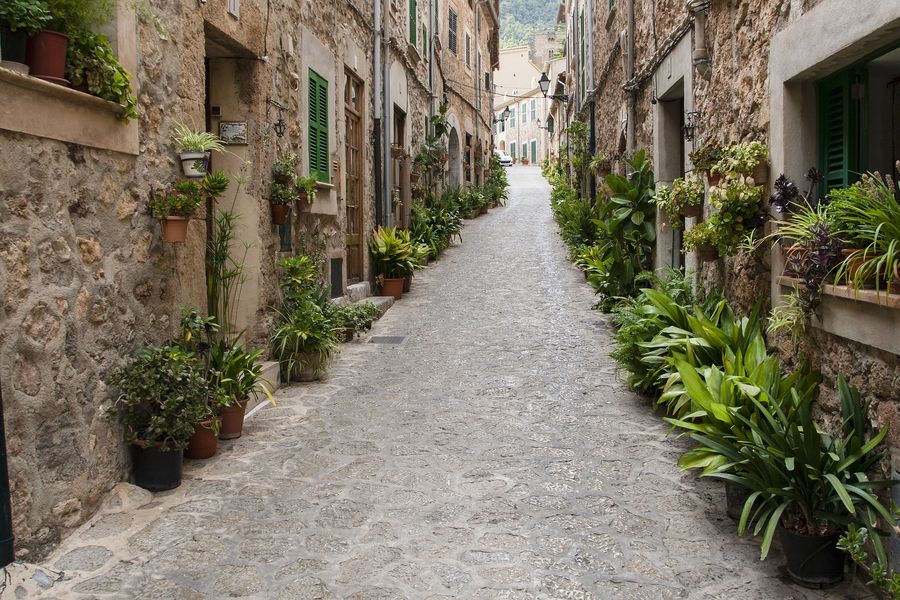
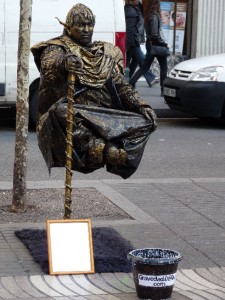

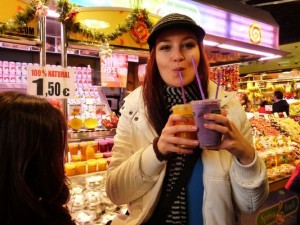
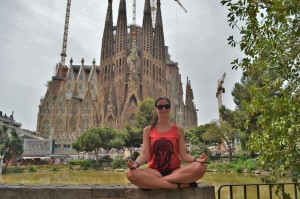

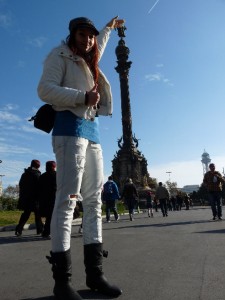
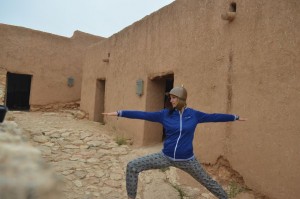

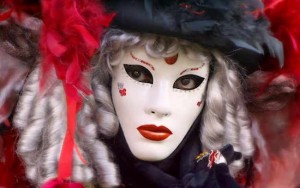
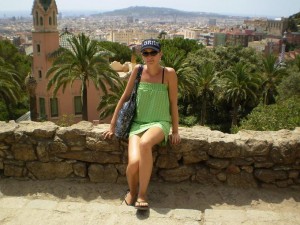
Johnny
| #
Mallorca seems like a good place to visit, especially if you are in Europe already.
Crazy Sexy Fun Traveler
| #
That’s true! It’s definitely one of the European islands you should visit.
Brindisino
| #
Hi Alex
I know this comment have nothing to do with Mallorca, but I want to say you that I love your blog.
I casually found it while looking for cute pics of my city, Brindisi, on Google Images.
And believe me, I was surprised! I really fall in love with your blog!
You wrote a lot of beautiful things about my city. You are not the only blogger, but you lived here for one year, and so you really taste my region. You have it in a piece of your soul, and it’s clear by reading your blog.
I’m proud you were in Brindisi, cause you have described my town in its essence.
Nine years passed from your departure, but your words are the same I would use to try to make people coming here: the promontory on the sea, where we “brindisini” go to run or just to stay with friends, also in the nights (it is also my favorite place in the city, as it was for you!); the absence of information about the days in wishing the Monumento al Marinaio are opened to tourists ? (I’m 25 but I still don’t know that!!); the beauty of our Carabbean-like beaches; the flavour of our Mediterranean cousin; the ever strong wind of Brindisi (I find the name Windisi brilliant!! I’ll use it from now till my death ?); the impossibility to go to Castello Aragonese ?
I don’t have words to say you how much you touch my heart reading of your experience here.
I just wanna you to know that, hoping you to come back again in future. Brindisi is even more beautiful than it was 10 years ago. Its “lungomare”, the frontline of the port, was restylized and now it’s one of the cutest in Italy, believe me.
There is a new natural reserve in Punta Penne, close to Granchio Rosso beach (I bet you listened to it in your permanence here), and the administration bought part of the property of the military port, so now it’s possible to walk on the coast of Canale Pigonati in Casale’s part.
I wish you the best. And again thank you!
Crazy Sexy Fun Traveler
| #
Grazie mille :) Your comment made me smile and brought many memories about Brindisi and my time there :) Thanks again!
Dev Jain
| #
Great content girl.
Thanks for useful tips. You are trying to help people to see more of the world and I appreciate it.